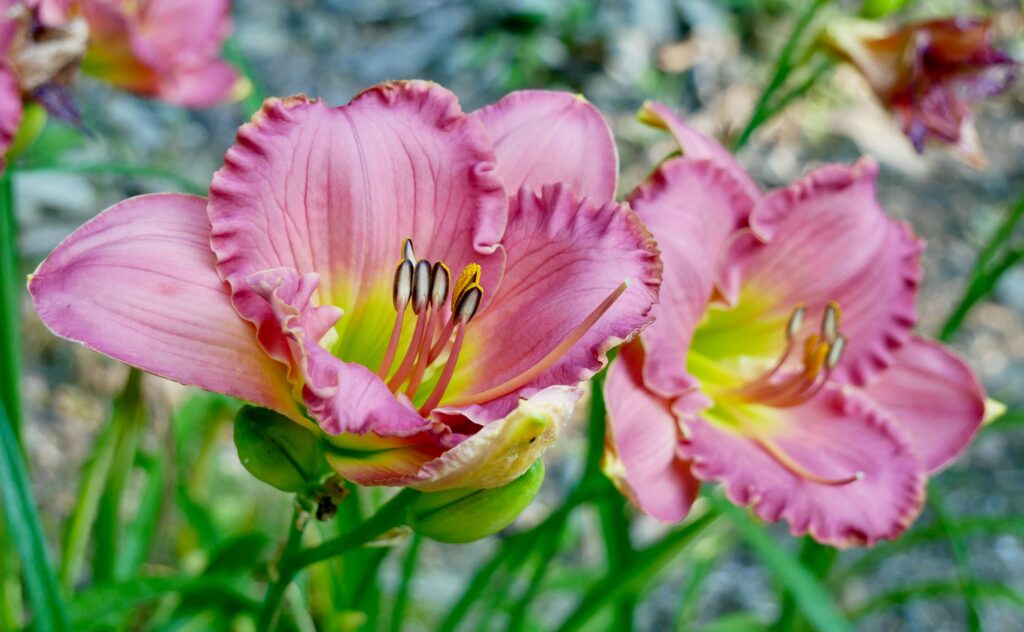By David P. Davis
Newsroom@DominionPost.com
This article is dedicated to my mom, Sarah Davis, who passed away this week at 94. Sarah was a true lover of plants and gardening to the end.
Daylilies are perennial plants in the genus Hemerocallis and are not in the lily family, although their flower resembles other lilies. The genus Hemerocallis is from the Greek meaning “beauty” and “day” as each individual flower lasts for only one day. To make up for this, individual plants can have a stalk of flowers providing blooms for up to two weeks and some can even re-bloom.
Daylilies are considered the perfect perennial by many. Culturally, they can tolerate diverse soil types, dry or wet locations, and produce flowers when in full sun or mostly shade. They come in a range of colors, shapes and sizes. They also can bloom from early summer into fall. They are frost and drought tolerant and can be grown throughout North America. And, when they proliferate, you can dig them up, separate the small tubers that are part of the fibrous root system (true lilies have bulbs), and replant them in a new area or share with friends.
Another difference between daylilies and true lilies is that they do not have any repellent properties, so deer do enjoy the flowers. If you choose to grow some yourself, spray with a repellent (we use a milk and water mixture) until after flowering.
At the WVBG we have most of our daylilies along the wall that forms the backdrop to our main lower parking lot. This wall is planted with sedum, prickly pear cactus, pinks, and hundreds of daylilies. We also have daylilies near our host shelter and in most of our other gardens.

Amazingly, the daylilies on the hot, dry, sunny wall do very well and many are now coming into bloom. At the same time, the daylilies near the host kiosk, where it is shady and wet, are also in bloom. Overall, those in the wetter, shady area are more robust than those in full sun.
This demonstrates daylily versatility. The wild varieties that populate many of our roadsides must be tough to out-compete other wildflowers and plants. In our gardens, they will do well wherever we place them, making do with what nature provides.
So, if I have not sold you yet on the wonders of daylilies, just come by the WVBG to see the range of colors, patterns, shapes, and sizes of those in bloom. My favorites are magenta, lemon, pink or red. Some have a chartreuse-colored throat or a deep red band. Some blooms are fat, velvety, and sculpted and others have long narrow petals (known as spider form). And, some are doubled with twice the petals and tepals.
Come see this and more at the WVBG, and let the flowers bring you some peace.
David P. Davis, Ph.D., gardener at the WVBG. For visiting information, maps, and more, visit WVBG.org.
TWEET @DominionPostWV




